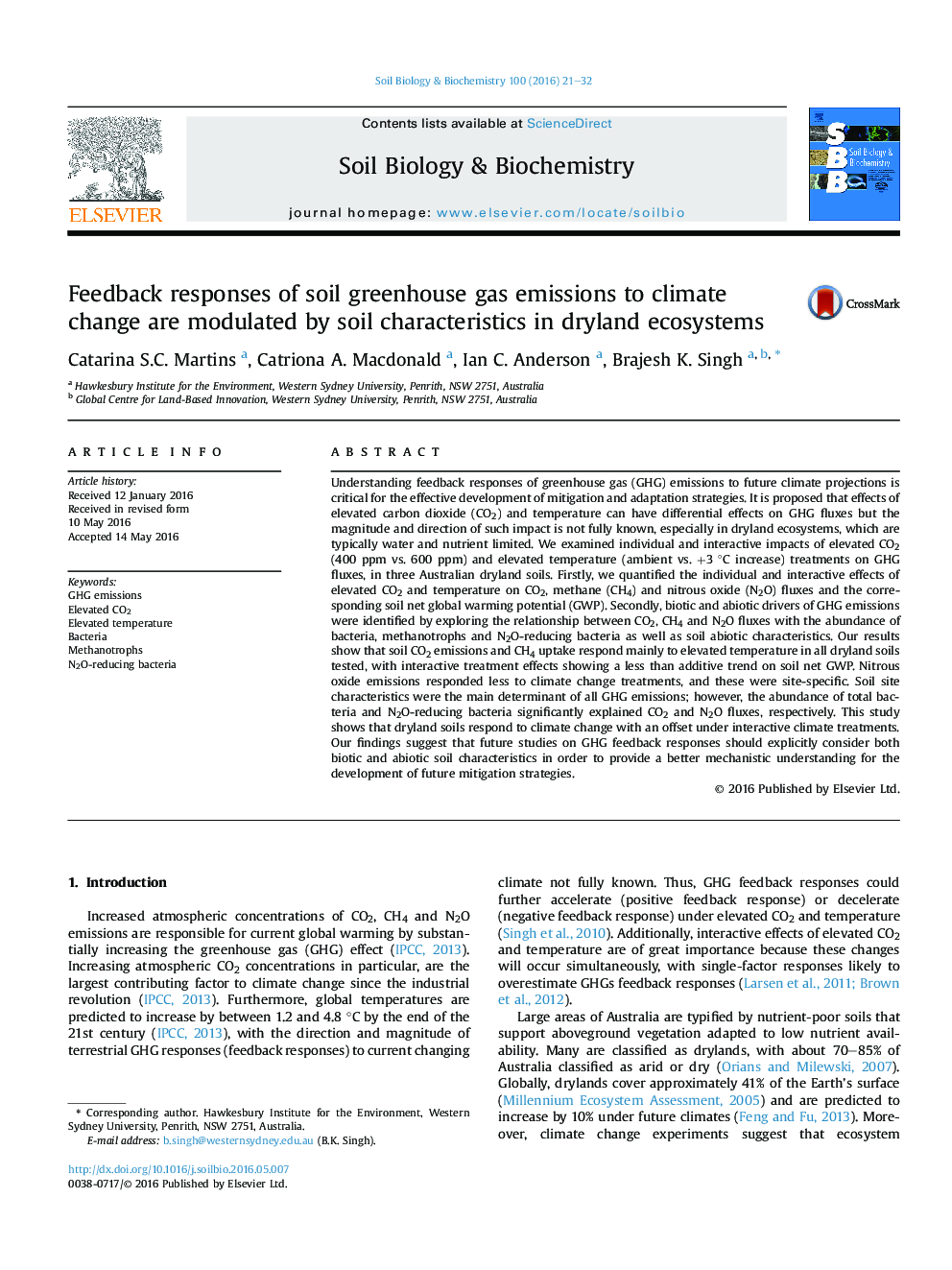| Article ID | Journal | Published Year | Pages | File Type |
|---|---|---|---|---|
| 8363425 | Soil Biology and Biochemistry | 2016 | 12 Pages |
Abstract
Understanding feedback responses of greenhouse gas (GHG) emissions to future climate projections is critical for the effective development of mitigation and adaptation strategies. It is proposed that effects of elevated carbon dioxide (CO2) and temperature can have differential effects on GHG fluxes but the magnitude and direction of such impact is not fully known, especially in dryland ecosystems, which are typically water and nutrient limited. We examined individual and interactive impacts of elevated CO2 (400 ppm vs. 600 ppm) and elevated temperature (ambient vs. +3 °C increase) treatments on GHG fluxes, in three Australian dryland soils. Firstly, we quantified the individual and interactive effects of elevated CO2 and temperature on CO2, methane (CH4) and nitrous oxide (N2O) fluxes and the corresponding soil net global warming potential (GWP). Secondly, biotic and abiotic drivers of GHG emissions were identified by exploring the relationship between CO2, CH4 and N2O fluxes with the abundance of bacteria, methanotrophs and N2O-reducing bacteria as well as soil abiotic characteristics. Our results show that soil CO2 emissions and CH4 uptake respond mainly to elevated temperature in all dryland soils tested, with interactive treatment effects showing a less than additive trend on soil net GWP. Nitrous oxide emissions responded less to climate change treatments, and these were site-specific. Soil site characteristics were the main determinant of all GHG emissions; however, the abundance of total bacteria and N2O-reducing bacteria significantly explained CO2 and N2O fluxes, respectively. This study shows that dryland soils respond to climate change with an offset under interactive climate treatments. Our findings suggest that future studies on GHG feedback responses should explicitly consider both biotic and abiotic soil characteristics in order to provide a better mechanistic understanding for the development of future mitigation strategies.
Related Topics
Life Sciences
Agricultural and Biological Sciences
Soil Science
Authors
Catarina S.C. Martins, Catriona A. Macdonald, Ian C. Anderson, Brajesh K. Singh,
